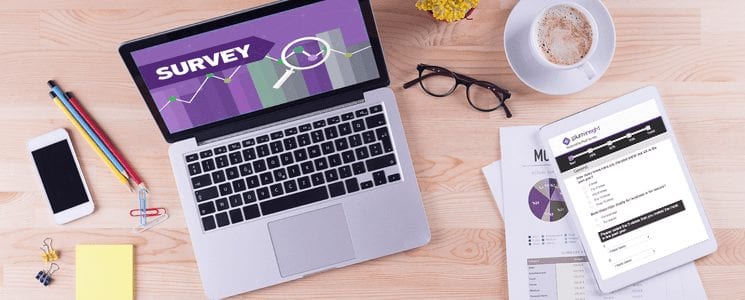When you think about it there aren’t different survey types. Not really. A survey is simply one or more questions intended to elicit a response on a given topic. Where things start to get complicated is when we factor in the goals we want to achieve by using surveys.
When we talk about “survey types” what we are really getting at is determining the right questions to give you useful results. Therefore, it’s necessary to ask yourself a few questions about what you’re trying to measure. A self-survey, if you will.
Customer experience isn’t limited to a single interaction. It’s precisely because there are so many touch points and factors that go into customer experience that we need to isolate what we want to measure.
Customer Satisfaction
Do your goods or services meet customer expectations? You can get as granular as you want here, as it’s a pretty broad survey category. What—exactly—did or did not meet expectations? Was it an actual product or a product feature? Are you trying to get a sense of customers’ general satisfaction with your company?
The more specific these kinds of survey are the better the resulting data is. This speaks to the benefit of this kind of survey—they allow companies to laser-focus on explicit aspects of their operations. Combining open-ended responses with numeric ratings yield the most useful data.
Demographic Trends
Your marketing textbooks from college often referred to this as part of targeting and segmenting. But the goal of this approach is to give a sense of what a specific population, whether that’s age, gender, location, repeat customers, or some other criteria that is relevant to your business goals, thinks about your offerings.
At the same time, you want to understand how your chosen demographics respond to specific situation. Therefore, you need to balance basic demographic inquiries with more goal-oriented questions. If you want to know why a particular population does or does not like a given product, for example, you need to ask explicit questions about it.
Customer Loyalty
It’s no secret that it’s easier to keep current customers than to gain new ones. So related to that idea it’s helpful to understand what keeps your current customers coming back for more. And believe it or not, customers that already have a vested interest in your company like to have a way to provide feedback. It makes them feel valued.
Of course, when it comes to loyalty you need to toe a careful line. Bombarding customers with surveys that gauge their loyalty too frequently can have the opposite effect. Space these out far enough so that you’re not hitting up the same people more than once or twice per year. Also, it’s best to keep these types of surveys short. Doing so not only shows your customers that you value them but that you value their time as well.
Product Feedback
Companies often know the direction they want to head in when developing new products and services. But what may make sense to a company as a logical next step might not resonate with customers in the same way. Using surveys to understand customer needs, demands, and desires is a great way to help prioritize new offerings.
The advantage of this type of survey is two-fold. One, you get a better sense of customer expectations and what they actually want to see. If most of your customers prefer option A to option B, then it makes a lot more sense to forge ahead with option A first because it will generate more revenue. The second advantage is a more efficient use of resources on your company’s end. Your team can focus on one product at a time, and not have to juggle multiple projects at the same time.
No matter what route you choose when creating and using surveys it’s important to remember that they’re just another tool. That means that asking better questions leads to better results. This is also why it’s critical to think about what you want to achieve with your surveys and design the questions appropriately before launching it. Time is an important factor in getting good response data and the best time to solicit customers is immediately after an interaction when everything is fresh in their minds. Therefore, you want to have your surveys ready to go and don’t want to waste valuable feedback because your questions weren’t just exactly perfect.
It’s also worth thinking about the channels used to deploy your surveys. Do you want to take advantage of phone-based surveys that give customers an easy way to leave detailed feedback? Do you want to use web-based surveys? A tool like Plum Insight eliminates the need to choose between the two because it does both automatically, giving you the best of both worlds.

